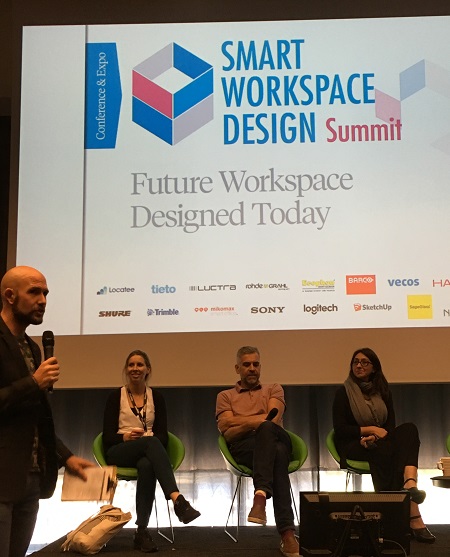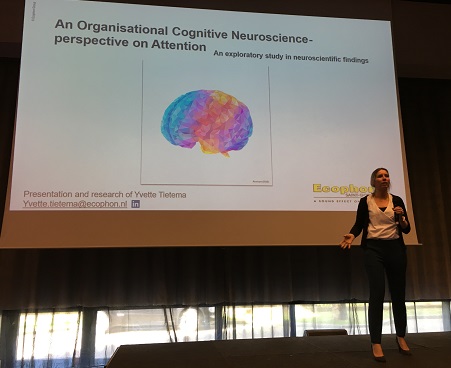
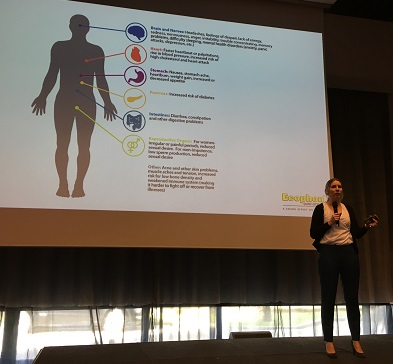
Smart Workspace Design Summit took place in Amsterdam October 4-5 (2018) and participants from all walks of the workplace trade joined in as to share and acquire related knowledge. A more holistic blogpost about this event was already posted and can be read here: Link
Below are more details regarding one of the two Ecophon speeches being related to sound and acoustics and how sound affect people. The other one is here: link
Yvette Tietema of Ecophon presented her research on Organizational Cognitive Neuroscience and attention. In this presentation she talked about the need of understanding the human brain better, because of increasing absenteeism costs mostly linked to mental health. Aspects related to the individual like our brain systems, the effect of multitasking, self-control, sensory input and habituation were discussed.
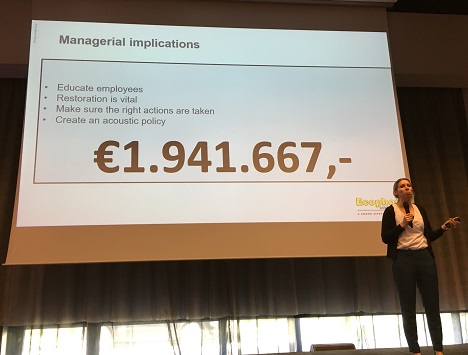
This should be connected to external factors, as our brains are interconnected with each other. Therefore, based on OCN-research a deep-dive was made into external factors, specifically artefacts, social situations and environmental features were discussed. For example, can library wall–paper lead to a more silent behavior, since we do not want to be loud in such a place. Yvette found that most respondents in her research are rarely focused and a lot of times distracted by IT (phone, social media). Also a majority did not move seats because of social pressure.
From neuroscientific research we found that this triggers a response in our brain, which is the same as physical pain. Most people said that they were multitasking quite a lot. Multitasking can lead to a decrease of productivity from 30-40%. Therefor also a good acoustic environment is important. If people get distracted by intelligible speech they are actually multitasking.

On average, people in her research were distracted 6.742 times per day. They estimated themselves that on average it takes them 6,565 minutes to start again after an interruption. This comes down to 1 hour per employee lost per day. Literature shows that it even 23 minutes before you are back to the same focus again. Which means it almost costs 3 hours a day per employee.
Shown in her research and also known from literature people talking was the biggest distractor and also in environmental features, noise is the most mentioned (81). This triggers all kinds of stress hormones and therefore we also see that in a noisy environment motivation decreases and absenteeism is increasing. And it also influences our emotions, which has also a relation to how well we can focus as negative emotions influence our Prefrontal cortex needed for attention. Yvette created a model based on her research:
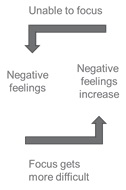
Tietema, Y. (2018). Organizational Cognitive Neuroscience-perspective on Attention. TIAS – School for Business.
Habituation on speech does not happen and still 90% of the companies in the Netherlands do not have an acoustic policy. Which is interesting as Yvette’s research also found that differences on company-level on multiple variables were significantly bigger than intra-individual differences (Tietema, 2018).
Contact: [email protected]
